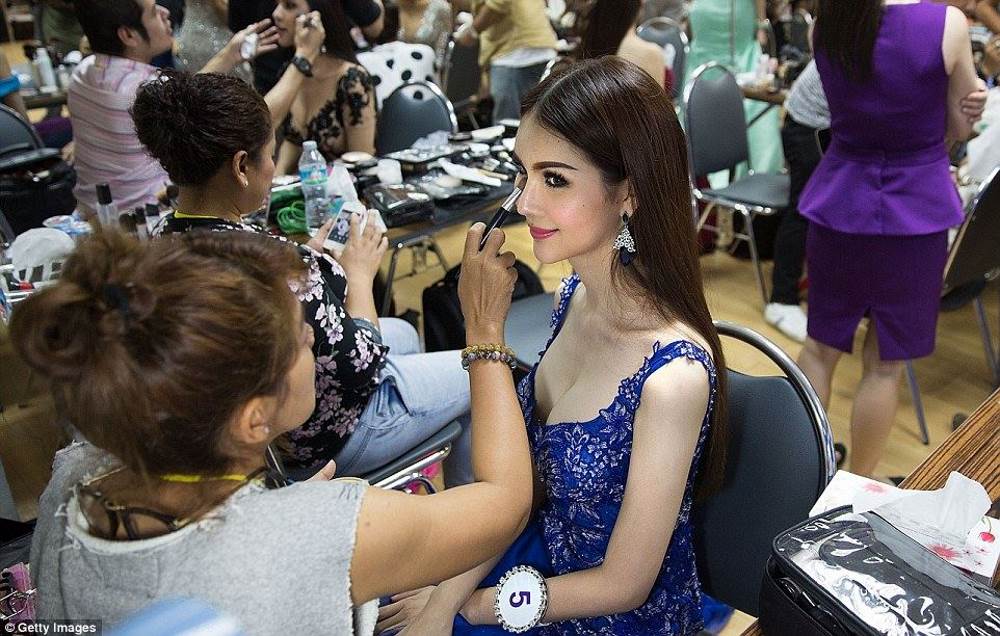Ladyboys, also known as transgender women, are an integral part of Philippine culture and society. For many people, meeting and building relationships with ladyboys can be an enriching experience. However, it can also be challenging if you do not understand the cultural nuances and social attitudes toward ladyboys in the Philippines. In this comprehensive guide, we will provide you with all the information you need to meet ladyboys in the Philippines and build meaningful relationships with them.
Introduction on how to meet ladyboys
In this section, we will provide a brief overview of the topic, explaining what ladyboys are and their prevalence in the Philippines. We will also outline the purpose of this guide.
Ladyboys, or transgender women, are individuals who were born male but identify and live as females. They are prevalent in the Philippines and are often highly visible in the entertainment industry, including beauty pageants, ladyboy cabaret shows, and nightclubs. The purpose of this guide is to provide a comprehensive overview of how to meet ladyboys in the Philippines and build positive relationships with them.
Understanding Ladyboys in the Philippines
In this section, we will provide a detailed explanation of what ladyboys are, their prevalence in the Philippines, and their cultural and social attitudes toward them.
Definition of Ladyboys
Ladyboys, also known as transgender women, are individuals who were assigned male at birth but identify and live as females. They may or may not have undergone hormone therapy or gender-affirming surgery.
Prevalence of Ladyboys in the Philippines
Ladyboys are prevalent in the Philippines and are often highly visible in the entertainment industry, including beauty pageants, cabarets, and nightclubs. According to some estimates, there are over 10,000 ladyboys in the Philippines.

Cultural and Social Attitudes Towards Ladyboys in the Philippines
Ladyboys in the Philippines are generally accepted and respected, although they may face discrimination and prejudice in some areas. Many Filipinos view ladyboys as an integral part of their culture and society, and they are often celebrated for their beauty and talent.
Places to Meet Ladyboys in the Philippines
In this section, we will provide you with information on where to meet ladyboys in the Philippines. We will discuss nightclubs and bars known for their ladyboy clientele, popular red-light districts, and online dating sites and apps for meeting ladyboys. We will also provide safety recommendations when meeting ladyboys in person.
Related article: best ladyboy bars in Bangkok
Nightclubs and Bars Known for their Ladyboy Clientele
There are many nightclubs and bars in the Philippines that cater to ladyboys and their admirers. Some of the most popular venues include Club Mwah in Manila, Stardust in Cebu, and J-Ave Superclub in Davao.
Popular Red Light Districts Known for Ladyboys
Red light districts are also popular places to meet ladyboys in the Philippines. Some of the most well-known districts include Angeles City in Pampanga, Makati City in Metro Manila, and Fields Avenue in Balibago, Angeles City.
Online Dating Sites and Apps for Meeting Ladyboys
Online dating sites and apps have become increasingly popular for meeting ladyboys in the Philippines. One of the most reputable sites for connecting with ladyboys is My Ladyboy Cupid. This ladyboy dating site offers a safe and secure platform for meeting ladyboys from all over the Philippines.
Etiquette and Manners When Meeting Ladyboys in the Philippines
In this section, we will provide you with information on appropriate language and behavior when meeting ladyboys in the Philippines, as well as dos and don'ts to show respect and avoid discrimination. We will also discuss how to avoid common mistakes and faux pas.
Appropriate Language and Behavior
When meeting ladyboys in the Philippines, it is important to use respectful language and behavior. Address them by their preferred name and pronouns, and avoid using derogatory terms or slurs.
How to Show Respect and Avoid Discrimination
To show respect and avoid discrimination, treat ladyboys as you would any other person. Avoid asking invasive questions about their gender identity or body, and focus on getting to know them as individuals. Respect their boundaries and preferences, and do not make assumptions based on their appearance or gender identity.
Dos and Don'ts When Meeting Ladyboys
Here are some dos and don'ts to keep in mind when meeting ladyboys in the Philippines:
Dos:
- Treat them with respect and kindness
- Listen to them and show interest in their lives and experiences
- Use their preferred name and pronouns
- Be open-minded and non-judgmental
Don'ts:
- Ask invasive questions about their body or gender identity
- Make assumptions based on their appearance or gender identity
- Use derogatory terms or slurs
- Treat them as objects or fetishes
Related article: Pro's and Con's of Ladyboy dating

Avoiding Common Mistakes and Faux Pas
To avoid common mistakes and faux pas when meeting ladyboys in the Philippines, it is important to be aware of cultural differences and social norms. For example, it is considered rude to point with your finger, and it is customary to bring a small gift when visiting someone's home for the first time.
Tips for Meeting Ladyboys in the Philippines
In this section, we will provide you with tips for meeting ladyboys in the Philippines, including how to approach them and start a conversation, understand their psychology, and build relationships with them.
How to Approach Ladyboys and Start a Conversation
Approaching ladyboys in the Philippines can be intimidating, but it doesn't have to be. Start by making eye contact and smiling, and if they seem interested, introduce yourself and strike up a conversation. Be genuine and respectful, and avoid using pickup lines or making inappropriate comments.
Understanding the Psychology of Ladyboys
To build meaningful relationships with ladyboys, it is important to understand their psychology and experiences. Many ladyboys in the Philippines face discrimination and marginalization and may have experienced trauma or rejection in their lives. Be compassionate and understanding, and listen to their stories without judgment.
How to Build Relationships with Ladyboys
Building relationships with ladyboys takes time and effort, but it can be incredibly rewarding. Be patient and understanding, and take the time to get to know them as individuals. Show interest in their hobbies and passions, and be supportive of their goals and aspirations. Communication is key, so be open and honest about your feelings and intentions.
Online Dating Sites and Apps for Meeting Ladyboys
In this section, we will focus on the online dating site "My Ladyboy Cupid" and provide you with information on how to use it to meet ladyboys in the Philippines.
About My Ladyboy Cupid
MyLadyboyCupid is a ladyboy dating site that specializes in connecting men with ladyboys from all over the world. It is a safe and discreet platform that is designed to help users find meaningful relationships with ladyboys.
How to Use My Ladyboy Cupid
To use My Ladyboy Cupid, simply create a profile and start browsing for potential matches. You can search for ladyboys based on location, age, interests, and other criteria. Once you find someone you are interested in, you can send them a message and start getting to know each other.
My Ladyboy Cupid offers a range of features to help you connect with ladyboys in the Philippines, including live chat, and the ability to send virtual gifts. The site also offers translation services to help you communicate with ladyboys who may not speak English fluently.
Safety Tips for Using My Ladyboy Cupid
While My Ladyboy Cupid is a safe and reliable dating site, it is important to take precautions to protect your safety and privacy. Here are some tips to keep in mind:
- Use a strong password and keep your account information private
- Be cautious when sharing personal information with others
- Use the site's messaging system to communicate with others, rather than giving out your personal email or phone number
- Report any suspicious or inappropriate behavior to the site's administrators
Related article: Safety Tips

Sexual Health and Safety
In this section, we will provide you with information on sexual health and safety when meeting ladyboys in the Philippines.
Understanding the Risks and Importance of Safe Sex
It is important to understand the risks associated with sexual activity, including the risk of sexually transmitted infections (STIs) and HIV. Ladyboys in the Philippines are at a higher risk of contracting HIV than the general population, so it is important to practice safe sex to protect yourself and your partner.
Explanation of Sexually Transmitted Infections (STIs) and HIV in the Philippines
STIs, including HIV, are a major health concern in the Philippines. According to the Department of Health, there were over 45,000 reported cases of HIV in the country in 2019, with men who have sex with men and transgender women being the most affected populations.
Tips for Practicing Safe Sex with Ladyboys
To reduce the risk of STIs and HIV, it is important to practice safe sex when meeting ladyboys in the Philippines. This includes using condoms during sexual activity and getting tested regularly for STIs and HIV.
Availability of Safe Sex Products and Resources
Safe sex products, including condoms and lubricants, are widely available in the Philippines. You can find them at drugstores, supermarkets, and convenience stores. There are also several organizations that provide resources and support for sexual health, including LoveYourself and The Red Whistle.
Related article: Don’t talk about those 5 things with a Ladyboy in bed
Understanding Transgender Rights in the Philippines
In this section, we will provide you with information on transgender rights in the Philippines, including the history of transgender rights, the current legal status of transgender individuals, and the SOGIE Equality Bill.
History of Transgender Rights in the Philippines
Transgender rights have been a contentious issue in the Philippines for decades. In 2001, the country passed the Anti-Discrimination Bill, which prohibits discrimination based on sexual orientation and gender identity. However, the bill has yet to be fully implemented, and transgender individuals continue to face discrimination and marginalization in many areas of life.
Current Legal Status of Transgender Individuals
Transgender individuals in the Philippines are legally recognized and protected under the law. They have the right to change their name and gender marker on official documents, including passports and driver's licenses.

Explanation of the SOGIE Equality Bill
The SOGIE Equality Bill is a proposed law that seeks to prohibit discrimination based on sexual orientation, gender identity, and expression in the Philippines. The bill has been pending in Congress since 2016 and has yet to be passed into law.
Advocacy and Support for Transgender Individuals in the Philippines
Several organizations and advocacy groups in the Philippines provide support and resources for transgender individuals.
These include Gender and Development Advocates (GANDA) Filipinas, the Transman Equality and Awareness Movement (TEAM), and the Association of Transgender People in the Philippines (ATP).
Cultural Insights on Ladyboys in the Philippines
In this section, we will provide you with cultural insights on ladyboys in the Philippines, including their historical and cultural background, their portrayal in popular culture and media, and their role in traditional gender roles.
Historical and Cultural Background of Ladyboys in the Philippines
Ladyboys have been a part of Philippine culture and society for centuries. In pre-colonial times, they were revered as spiritual leaders and healers and were often given positions of authority in their communities. Today, ladyboys continue to play an important role in Philippine culture and are often celebrated for their beauty and talent.
Ladyboys in Popular Culture and Media
Ladyboys are highly visible in Philippine popular culture and media, particularly in beauty pageants and entertainment. They have also been featured in several films and television shows, including the hit show "It's Showtime."
Ladyboys and Traditional Gender Roles in the Philippines
Ladyboys in the Philippines challenge traditional gender roles and norms and are often viewed as pioneers and trailblazers. They have played a significant role in raising awareness and advocating for the rights of transgender individuals in the country.
Challenges and Misconceptions
In this section, we will discuss some of the common misconceptions about ladyboys in the Philippines, the challenges they face in society, and the discrimination and violence they may encounter.
Common Misconceptions about Ladyboys in the Philippines
Ladyboys in the Philippines often face misconceptions and stereotypes from the wider community. Many people view them as promiscuous, immoral, or unnatural when in reality, they are simply individuals who are living their lives authentically.
Challenges that Ladyboys Face in Society
Ladyboys in the Philippines face several challenges in society, including discrimination in employment, education, and healthcare. They may also face violence and harassment, particularly in public spaces.
Discrimination and Violence Towards Ladyboys in the Philippines
Discrimination and violence towards ladyboys in the Philippines is a serious issue. Ladyboys are often targets of hate crimes, and many have experienced verbal and physical abuse at the hands of others.
Support and Resources for Ladyboys in the Philippines
In this section, we will provide you with information on the resources and support available for ladyboys in the Philippines, including advocacy groups, healthcare and medical resources, and educational and employment opportunities.
Advocacy Groups and Support Networks for Ladyboys
There are a number of advocacy groups and support networks for ladyboys in the Philippines, including the Transgender Day of Remembrance Philippines, the Philippine LGBT Chamber of Commerce, and the Transgender Rights Advocacy Network Philippines.
Healthcare and Medical Resources
Ladyboys in the Philippines have access to a range of healthcare and medical resources, including gender-affirming surgery and hormone therapy. There are also a number of organizations that provide counseling and support for transgender individuals.
Educational Resources and Vocational Training
Ladyboys in the Philippines have access to a range of educational resources and vocational training programs, including scholarships, job training, and entrepreneurship opportunities.
Employment and Business Opportunities
Ladyboys in the Philippines have the right to equal employment opportunities and are protected under the law. There are a number of organizations that work to promote diversity and inclusion in the workplace, including the Philippine LGBT Chamber of Commerce.
My Ladyboy Cupid Blogs
If you're a ladyboy or someone who is interested in the ladyboy community, My Ladyboy Cupid blogs is a great resource to check out. This website offers a variety of interesting articles and blog posts that cover a range of topics, including dating advice, lifestyle, and culture. Whether you're looking for tips on how to navigate the dating scene as a ladyboy or want to learn more about the experiences and perspectives of ladyboys from around the world, My Ladyboy Cupid blogs has you covered.
The website also features personal stories and interviews with ladyboys, which provide valuable insights and perspectives on what it's like to be a part of this community. Overall, if you're looking for informative and engaging content related to ladyboys, My Ladyboy Cupid blog is definitely worth a visit.
Conclusion
In conclusion, meeting ladyboys in the Philippines can be a fulfilling and enriching experience. By understanding their culture, social attitudes, and challenges, you can build meaningful relationships and connections with these individuals. Remember to approach them with respect and kindness, and to be open and non-judgmental. It is also important to prioritize your sexual health and safety and to practice safe sex when engaging in sexual activity.
By using resources like My Ladyboy Cupid, you can connect with ladyboys from all over the Philippines and build meaningful relationships. And by educating yourself on transgender rights and supporting advocacy groups and resources, you can help promote equality and acceptance for all individuals, regardless of their gender identity.
FAQ – questions & answers of meeting Ladyboys in the Philippines
If you are new to the topic of ladyboys in the Philippines, you may have some questions about their culture, prevalence, and safety. In this FAQ section, we will provide answers to some of the most common questions about meeting ladyboys in the Philippines. From understanding what a ladyboy is to learning about the risks of STIs and HIV, we hope to provide you with the information you need to approach this topic with sensitivity and awareness.
Are ladyboys common in the Philippines?
Ladyboys are relatively common in the Philippines, as the country is known for its open-mindedness and acceptance of diverse gender expressions. The Philippines has a rich history of gender diversity, and this cultural acceptance can be traced back to pre-colonial times when 'babaylan' (shamans or healers) were respected members of the community.
What are some tips for meeting ladyboys in the Philippines?
To meet ladyboys in the Philippines, you can visit popular tourist destinations, nightlife venues, or online dating sites like My Ladyboy Cupid. However, it is important to be respectful, treat them as you would any other person, and avoid objectifying or fetishizing them. Remember that they are individuals, each with their own unique experiences and perspectives.
How can I support ladyboys in the Philippines?
- Educate yourself on transgender issues and learn about the challenges they face.
- Be respectful and treat them with dignity and equality.
- Advocate for their rights and stand against discrimination and violence.
- Support local organizations or NGOs working towards the welfare of transgender individuals.
- Encourage businesses to adopt policies that are inclusive and promote diversity.
Are ladyboys at a higher risk of HIV and STIs?
Yes, ladyboys are at a higher risk of HIV and other sexually transmitted infections (STIs) compared to the general population. This increased risk is often attributed to factors such as social stigma, discrimination, lack of access to appropriate healthcare, and higher rates of sex work in some cases. It is crucial to promote safe sex practices, raise awareness about HIV/STI prevention, and ensure that healthcare services are accessible and inclusive to help mitigate this risk.



